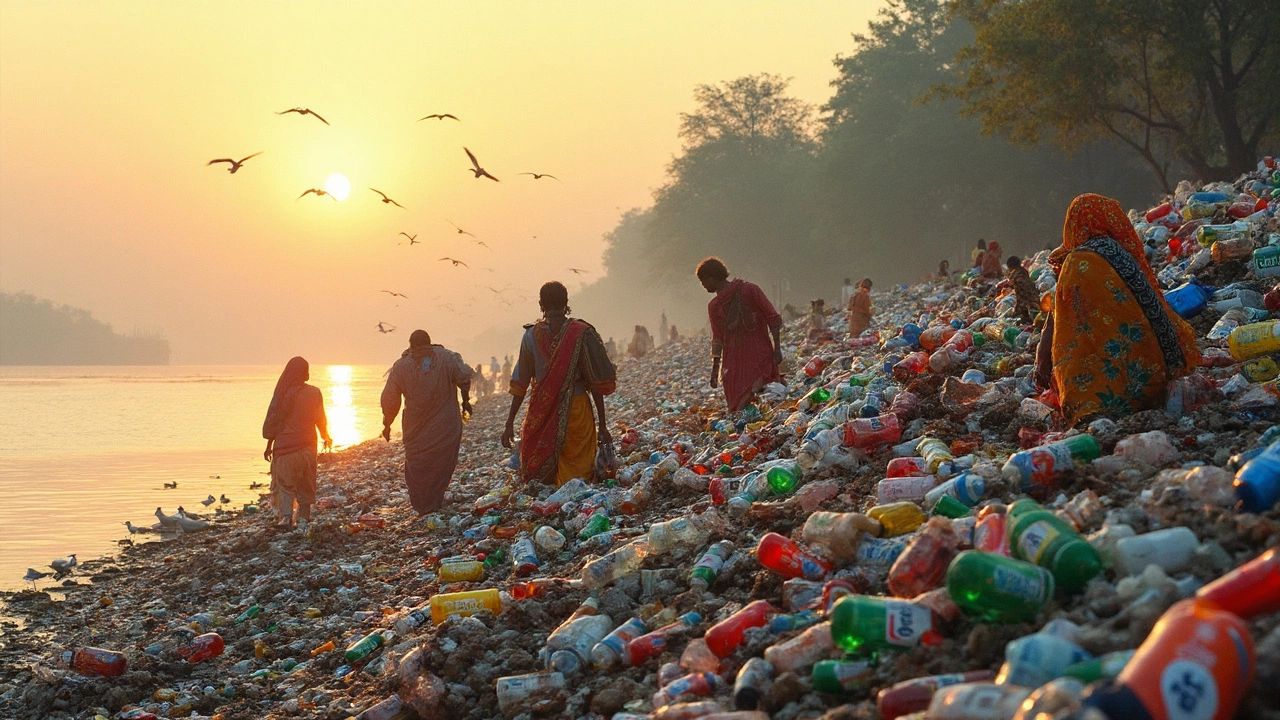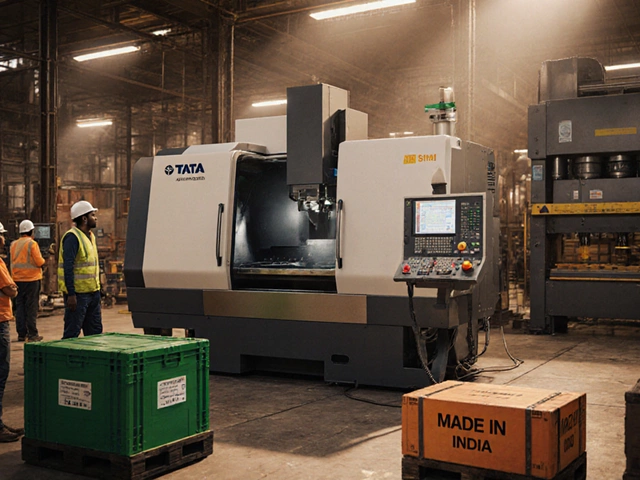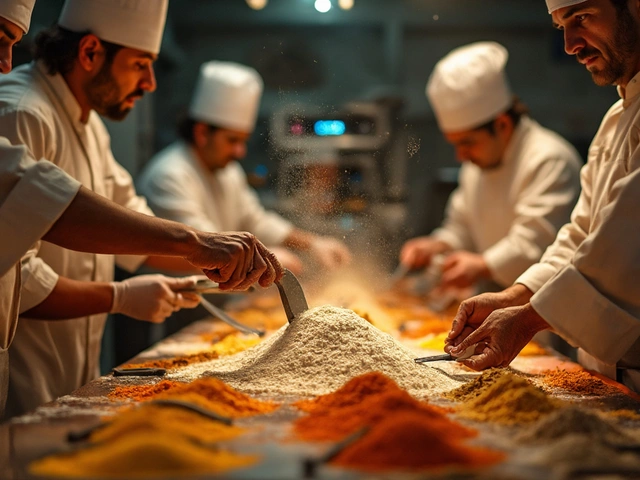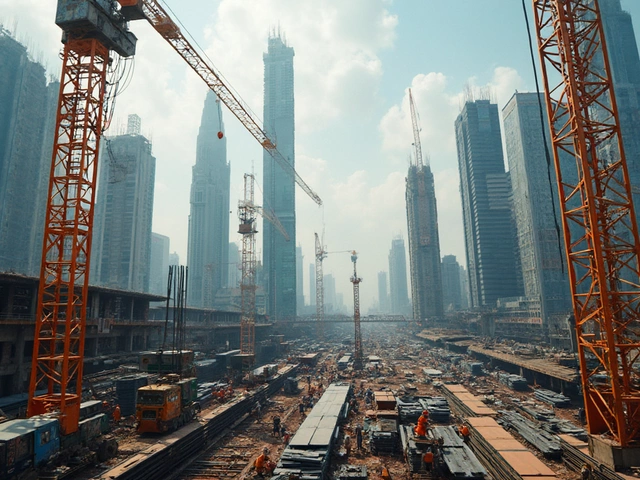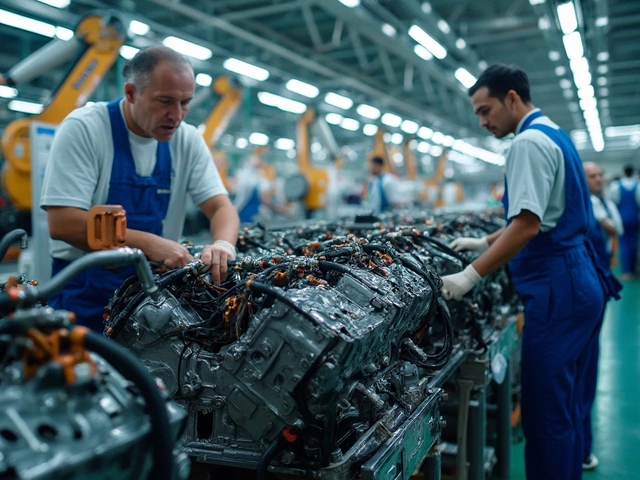Stop for a moment and think about how often you see a plastic bottle, wrapper, or bag just floating around—on the street, in parks, even at the beach. Annoying, right? But ever wondered which company is behind most of that mess? For years, folks have tried to point fingers, but thanks to a bunch of global cleanups and powerful research, we now have some clear answers.
The name that keeps coming up? It’s Coca-Cola. Yep, the world’s favorite soda brand makes a lot of headlines, not just for its drinks, but for topping the charts in plastic pollution year after year. In 2024, global audits found Coca-Cola products left behind far more plastic than its closest rivals. Why? Scale. With billions of drinks sold in single-use plastic bottles every year, that waste adds up fast.
The numbers aren’t just big—they’re wild. One recent study counted more than 2 million pieces of Coca-Cola plastic waste in over 50 countries during just one annual cleanup drive. And it’s not just Coke; companies like PepsiCo and Nestlé aren’t far behind, thanks to their snacks, drinks, and grab-and-go foods packaged in single-use plastic. But Coca-Cola wins the not-so-glamorous prize here.
- Who Tops the Global Plastic Polluter List?
- How Companies Drive Plastic Waste
- Surprising Stats: The Plastic Numbers
- Why Single-Use Plastics Won’t Go Away
- Tips to Push Back Against Plastic Pollution
Who Tops the Global Plastic Polluter List?
If you want to know who the real heavyweights are when it comes to plastic pollution, it’s hard to ignore the worldwide cleanups and brand audits run by groups like Break Free From Plastic. They gather trash from beaches, rivers, and city streets, then sort it by brand so there’s no hiding who's behind all the plastic. Guess who almost always comes out on top? Coca-Cola.
Coca-Cola has been crowned the biggest plastic polluter for several years straight — and not in a good way. In the latest 2024 plastic waste audit, volunteers found Coca-Cola packaging in nearly every country they checked, outpacing companies like PepsiCo, Nestlé, and Unilever. These brands aren’t just making empty bottles and snack wrappers; they’re pumping out billions of single-use items every year, fueling the problem.
Here’s a look at the companies that most often show up on the top polluter list based on the 2024 audit data:
| Rank | Company | Number of Plastic Items Found |
|---|---|---|
| 1 | Coca-Cola | 2,087,235 |
| 2 | PepsiCo | 1,487,206 |
| 3 | Nestlé | 953,000 |
| 4 | Unilever | 648,543 |
| 5 | Mondelez International | 374,896 |
Notice how sharp the drop is after the top two? That gap shows just how massive Coca-Cola’s plastic footprint really is. It also puts a spotlight on the brands you see almost everywhere — in stores, at sports games, and at pretty much any event with snacks and drinks.
What’s wild is that these numbers only count the plastic that actually got picked up and sorted. There’s a ton more that goes uncounted, either because it’s missed or already broken down into tiny pieces. So, the real numbers are probably even bigger.
How Companies Drive Plastic Waste
Big brands aren’t just making plastic to meet demand. They actually play a huge part in creating that demand in the first place. The main strategy? Single-use packaging. Plastic pollution isn’t just a byproduct—it’s built into the business model. If you buy a soda, snack, or convenience meal, chances are it’s wrapped in plastic that’ll be thrown away in minutes but linger in the environment for centuries.
Let’s talk scale. Coca-Cola alone makes about three million tons of plastic packaging each year. That’s over 200,000 bottles a minute—enough to circle the Earth 31 times annually. Their products show up everywhere because they get distributed, sold, and discarded literally everywhere.
It’s not just their volume—it’s their push for “on-the-go” lifestyles. Companies hype speed and convenience, pushing products in smaller, portable sizes. That means more wrappers, more cups, more bottles—more waste. And here’s the thing: recycling doesn’t keep up. Only about 9% of plastic waste ever actually gets recycled, according to the UN; the rest ends up in landfills or the ocean.
"Brands like Coca-Cola and PepsiCo have become synonymous with plastic pollution, not just because they produce so much, but because their business models rely on disposable packaging—the kind that’s clogging our beaches and rivers."
— Emma Priestland, Global Corporate Campaigns Lead at Break Free From Plastic
Here’s a quick look at the numbers from recent audits:
| Company | Plastics Produced (tons/year) | Recycling Rate (%) |
|---|---|---|
| Coca-Cola | ~3,000,000 | ~10 |
| PepsiCo | ~2,300,000 | ~9 |
| Nestlé | ~1,700,000 | ~11 |
What’s stopping change? Companies argue that plastic is light, cheap, and keeps food fresh. But really, a lot of it comes down to cost-cutting and keeping things familiar. Plus, marketing and partnerships with other big brands feed that disposable culture.
- Pushing convenience through tiny packaging ups plastic use everywhere.
- Frequent “limited edition” and seasonal packages just add more trash.
- Even products marked “recyclable” or “green” often don’t get recycled, depending on where you live.
If you want to do something about it, start by checking out what your favorite brands use for packaging. Let them know you care—companies notice when enough people demand less waste.
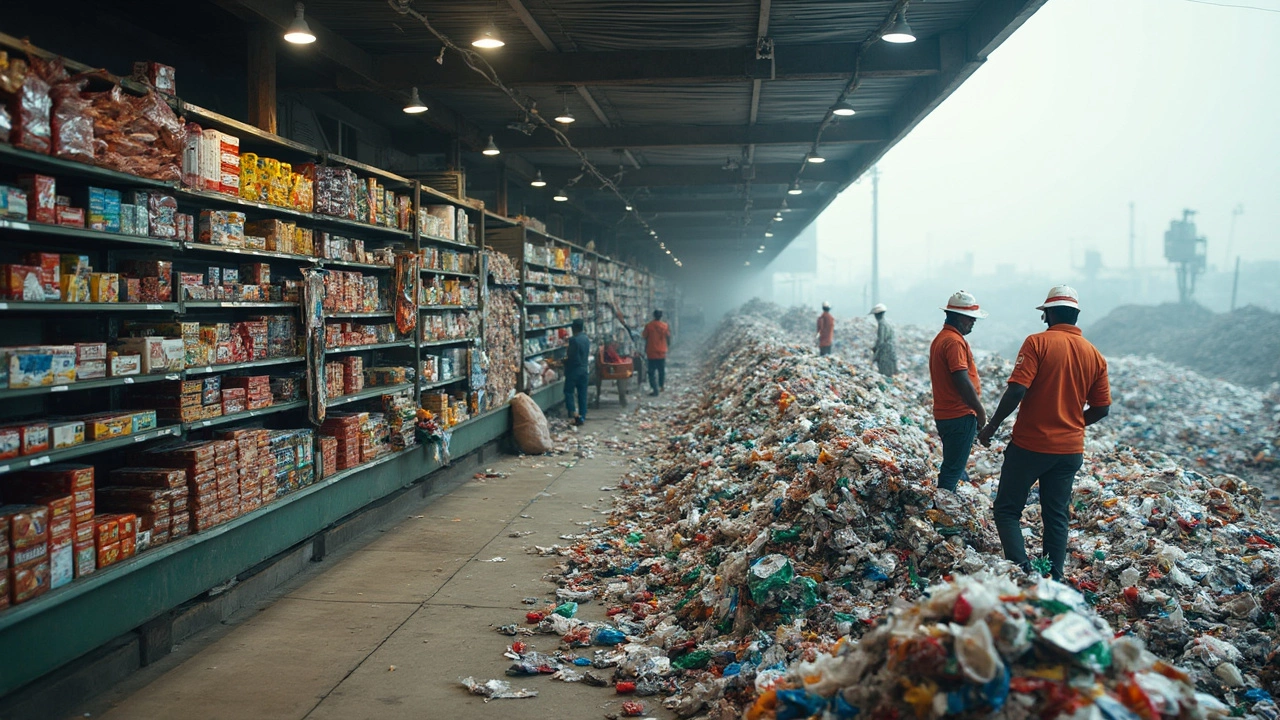
Surprising Stats: The Plastic Numbers
The sheer volume of plastic pollution from big brands is hard to wrap your head around, but the numbers lay it out plain as day. Every year, groups like Break Free From Plastic get thousands of volunteers worldwide to pick up and count branded plastic trash. Their reports pull no punches and they’re loaded with data that might make you rethink that next bottled drink.
Let’s check out some jaw-dropping stats from the last few years. According to the 2024 Brand Audit report, the top three companies were responsible for nearly 25% of all branded plastic waste collected across over 80 countries. And when it comes to plastic pollution, Coca-Cola stands out by a long shot.
| Company | Plastic Items Collected (2024) | Share of Total Branded Waste (%) | Main Products |
|---|---|---|---|
| Coca-Cola | 2,030,000+ | 14.7% | Beverages (bottles, caps, labels) |
| PepsiCo | 1,258,000+ | 7.8% | Beverages, Snacks (wrappers, bottles) |
| Nestlé | 1,035,000+ | 7.1% | Bottled water, snacks (wrappers, bottles) |
The numbers above don’t even count the unbranded plastic junk (think generic bags, wrappers, and random pieces) that clogs up waters and lands. But branded stuff is easier to trace back, and it’s clear the biggest polluters have global reach. If you start adding up the billions of bottles and wrappers made and sold by these brands every year, the figures get even more staggering. For example, a 2023 Environmental Investigation Agency report estimated Coca-Cola alone produced more than 120 billion plastic bottles per year—enough to circle the earth more than 600 times if lined up end-to-end.
That’s just the tip of the iceberg. Less than 10% of this plastic gets recycled. The rest? It’s headed for landfills, burned, or tossed into the environment, where it takes hundreds of years to break down. Knowing these numbers puts the scale of the problem in your hands—so you know who’s really filling up the planet with plastic, and why the fight against single-use plastics matters so much.
Why Single-Use Plastics Won’t Go Away
Single-use plastics feel like they’re everywhere because, honestly, they are. A mind-blowing 400 million tons of plastic is made every year, and more than a third of that is designed to be used once and tossed. Cheap and light, these plastics let companies like Coca-Cola ship drinks worldwide without worrying about breakage or leaks. Plus, they’re convenient for customers who want a cold drink or a snack on the go. So there’s a ton of business pressure to keep using them, even though everyone knows they’re a big part of the plastic pollution problem.
A big roadblock: recycling isn’t nearly as easy or effective as people wish. The EPA says just about 9% of all plastic ever made has actually been recycled. The main reasons? Some plastics can’t be recycled with current tech, and a lot of countries don’t have the proper recycling systems. Add to that confusing recycling symbols and rules that change from city to city. So, a ton of this plastic ends up in landfills or the ocean, not back on the shelf.
Brand image matters too. According to a Greenpeace report from late 2023, “Companies have done more PR to look green than actually cutting plastic. Even so-called ‘recyclable’ packaging often isn’t recycled in reality.”
“The global plastics crisis is growing—not shrinking—even as multinationals claim to be tackling it. Real change would mean dropping single-use packaging for good.” — Greenpeace International, 2023
Another reason single-use plastic sticks around? The alternatives cost more. Glass and aluminum are pricier, heavier, and tougher to ship in huge amounts. Bioplastics (made from plants) sound cool but often need special facilities to break down, and those are rare.
- Profit drives choices: Single-use plastics are easy to produce on a massive scale.
- Consumer habits: People aren’t giving up convenience, especially when grabbing food or drinks on the go.
- Lack of strict rules: Many places don’t have laws forcing companies to ditch plastic for good.
So unless there’s a real shift—from customers demanding change, to brands stepping up, to governments making tough rules—single-use plastics aren’t going anywhere soon.
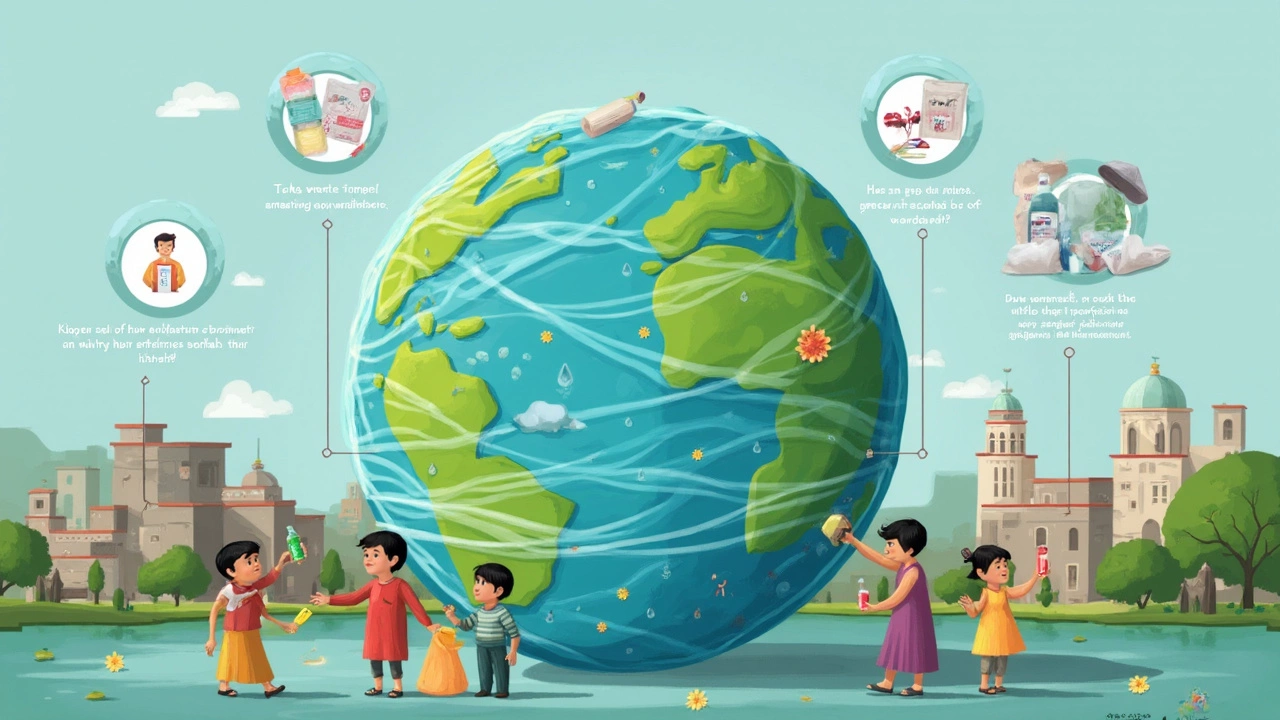
Tips to Push Back Against Plastic Pollution
The plastic problem feels massive, but you actually have more power than you think. When it comes to plastic pollution, the choices you make every day can really add up. And companies pay close attention when people start changing what they buy and speak up for smarter packaging.
First up: single-use plastics. Nearly half the plastic waste found in global audits, including those done by Break Free From Plastic, comes from just a handful of types—like bottles, food wrappers, and bags. Coca-Cola alone pumps out almost 200,000 plastic bottles a minute (yep, you read that right). Most of these are used once and tossed, often ending up in places they shouldn't.
- Skip single-use when you can: Go for reusable bottles, bags, and coffee cups. Bringing your own at stores and cafes is a small move, but it's proven to cut down personal waste by at least 20% when done regularly.
- Choose companies making changes: Some brands (like Unilever and Danone) now offer products in refill stations or use recycled plastic. When you pick these, you're showing companies that less waste matters to you.
- Recycle smarter: Most recycling bins are full of stuff that can't be recycled, so check what your city actually takes. Bottles and jugs are usually good; wrappers usually aren't. Clean, empty containers before tossing them in the blue bin.
- Raise your voice: Many places now have plastic bag bans or charge a fee for single-use items because people asked for it. If your area doesn't have these rules, a few emails or messages to your council can make a difference. Policy changes often start with a handful of persistent voices.
Sometimes, it helps to see how all those habits stack up. Here’s a quick look at how much impact simple changes can make in a single year, based on real-world data:
| Action | Plastic Saved per Person per Year |
|---|---|
| Using a reusable water bottle | up to 156 bottles |
| Swapping single-use bags with reusables | over 300 bags |
| Refusing takeout cutlery/straws | around 100 pieces |
You don’t have to do everything perfectly. Even a couple of changes sends a message, and when that happens on a bigger scale, major companies start to take notice. Your daily actions and choices, multiplied by a few million people, can put real pressure on these plastic manufacturing giants.

